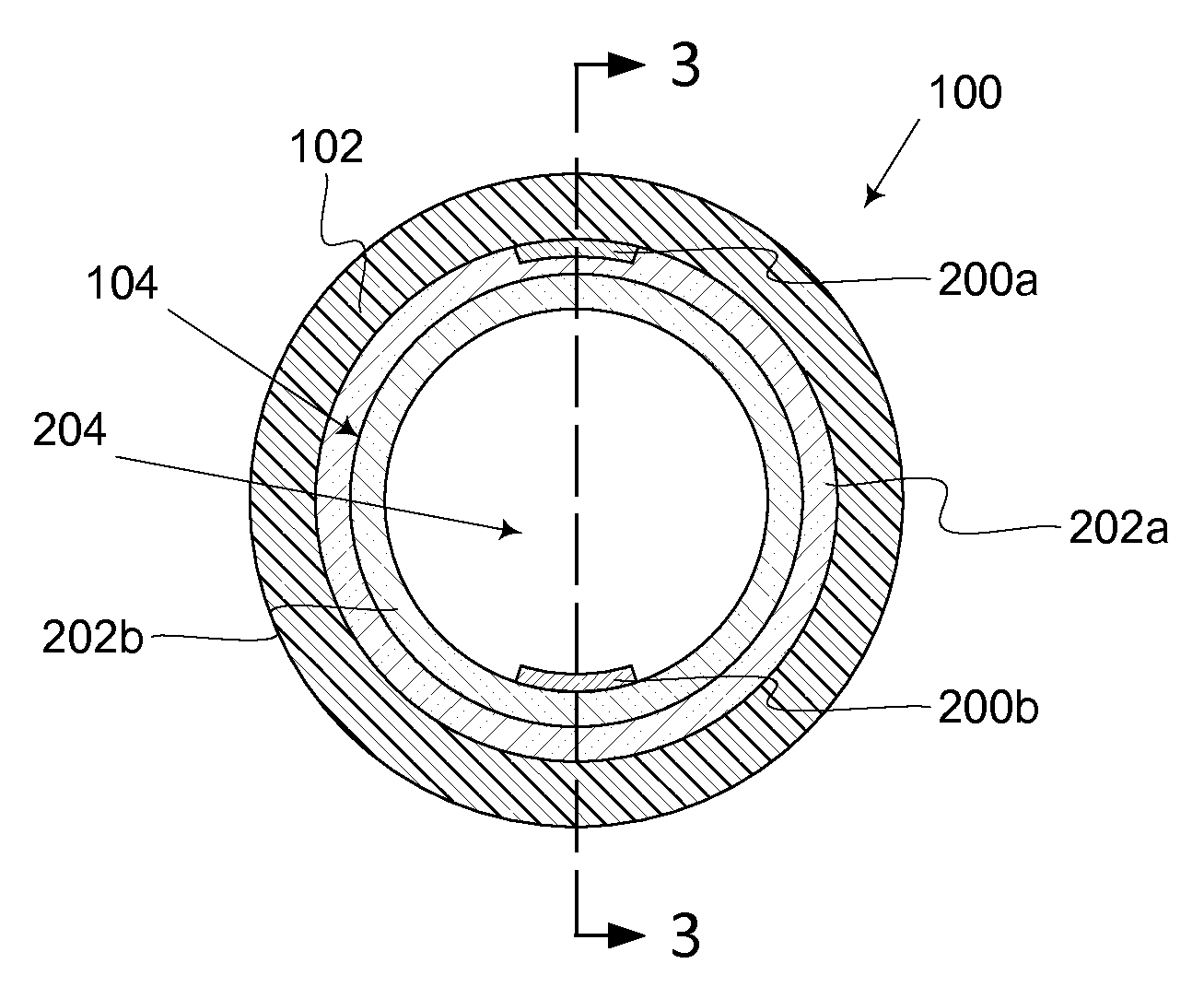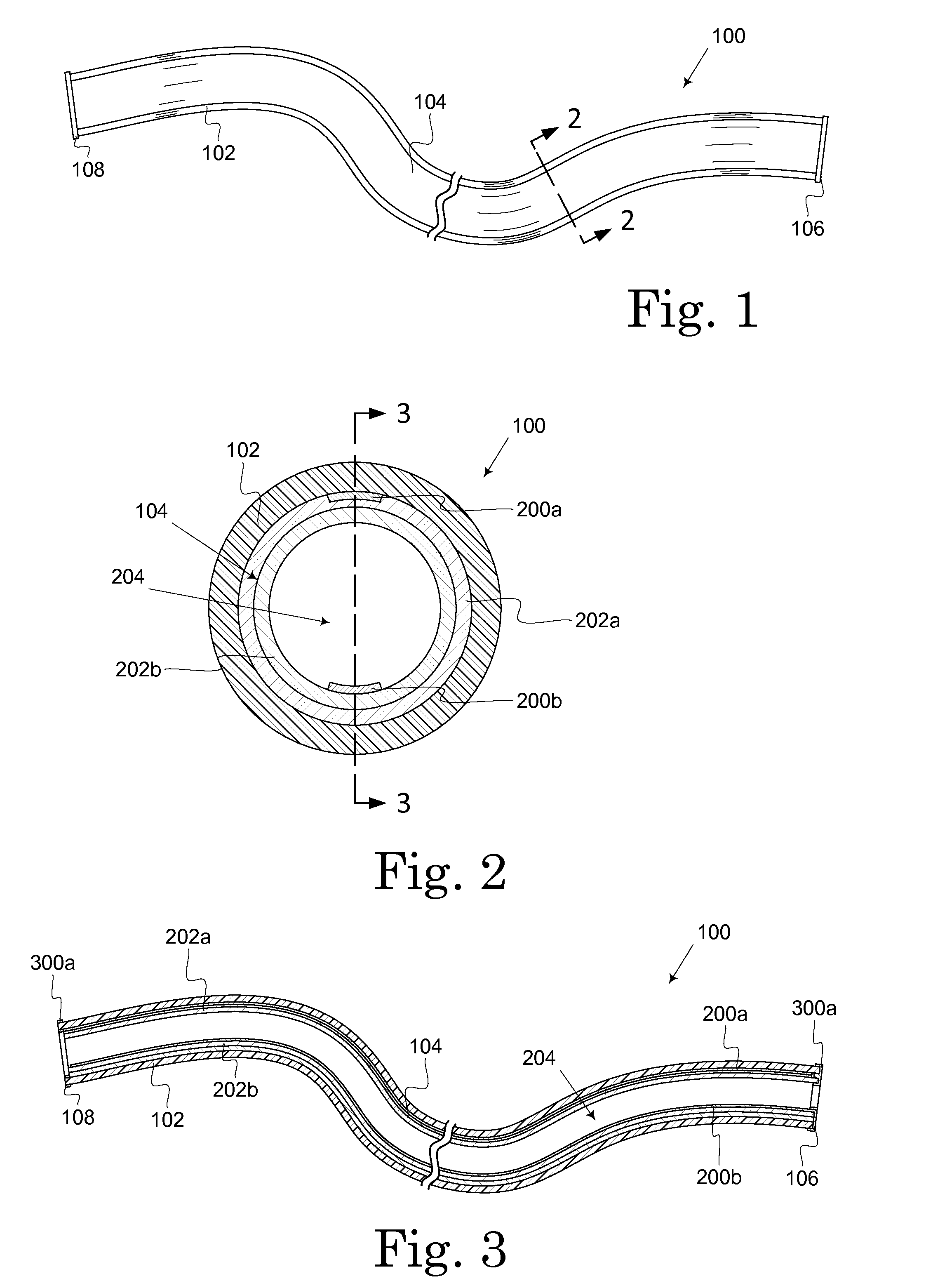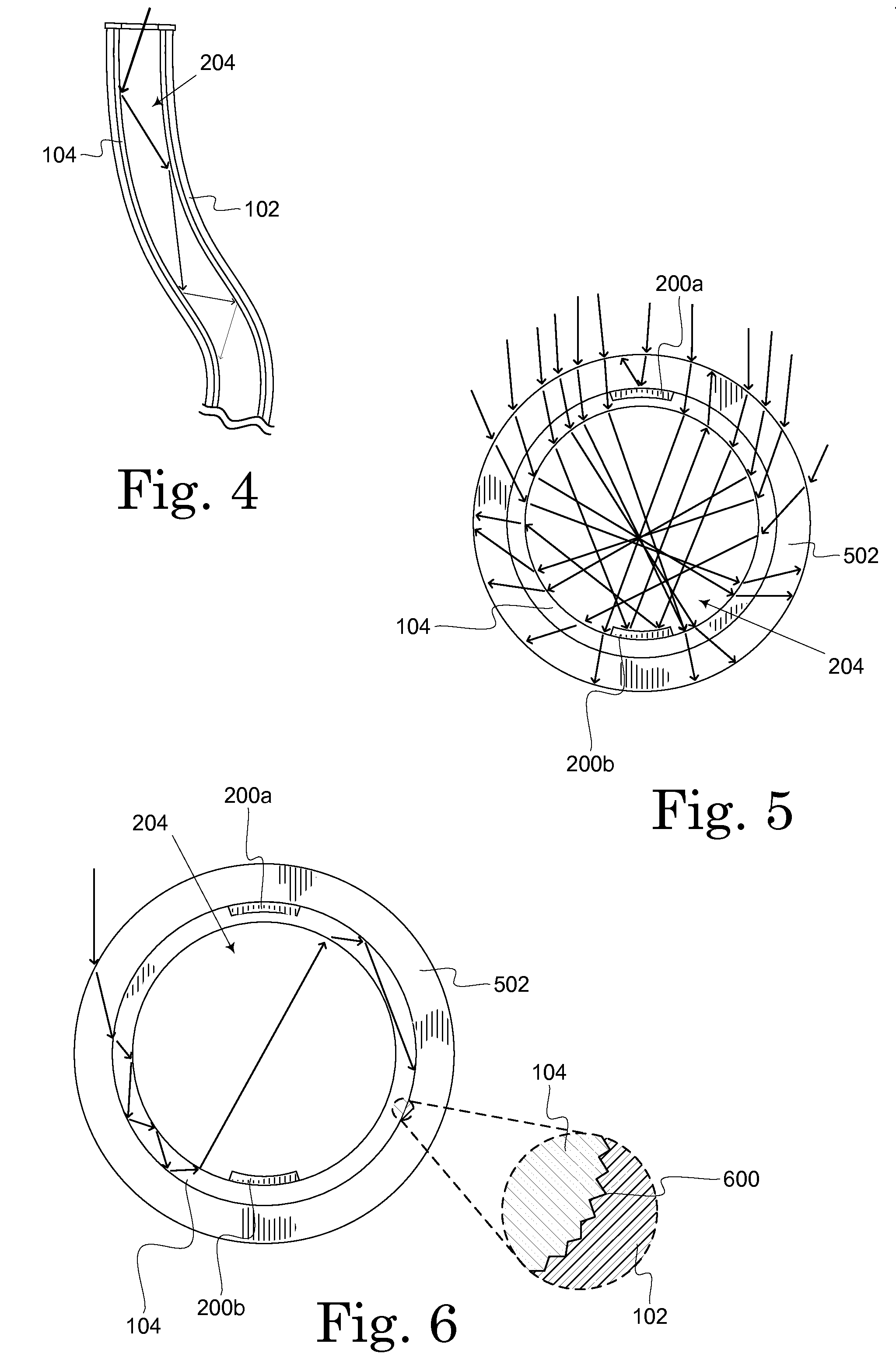Hollow photovoltaic fiber
a photovoltaic fiber and hollow technology, applied in the field of hollow photovoltaic fibers, can solve the problems of reducing affecting and reducing the so as to effectively minimize or eliminate the impact of the strip contact on the energy conversion efficiency of the hollow photovoltaic fiber. , the effect of reducing the impact of the strip conta
- Summary
- Abstract
- Description
- Claims
- Application Information
AI Technical Summary
Benefits of technology
Problems solved by technology
Method used
Image
Examples
Embodiment Construction
[0024]A hollow photovoltaic fiber is described herein and illustrated in the accompanying figures. The hollow photovoltaic fiber includes semiconductor formed on the inner surface of a hollow tube or on a flexible substrate subsequently formed into a hollow tube. The hollow photovoltaic fiber is suitable for creating a variety of semiconductor devices, including solar cells. Light entering the hollow photovoltaic fiber deposits energy in the semiconductor as it travel through the tube. The hollow photovoltaic fiber exhibits improved energy conversion efficiency over planar thin film solar cells due to the large semiconductor surface area and longer light travel path provided by the tube. Embodiments of the hollow photovoltaic fiber are lightweight and flexible allowing the creation of non-planar solar cells and the applications for solar cells to extend into such areas as the manufacture of photovoltaic textiles or photovoltaic non-woven fabrics.
[0025]FIG. 1 illustrates one embodime...
PUM
 Login to View More
Login to View More Abstract
Description
Claims
Application Information
 Login to View More
Login to View More - R&D
- Intellectual Property
- Life Sciences
- Materials
- Tech Scout
- Unparalleled Data Quality
- Higher Quality Content
- 60% Fewer Hallucinations
Browse by: Latest US Patents, China's latest patents, Technical Efficacy Thesaurus, Application Domain, Technology Topic, Popular Technical Reports.
© 2025 PatSnap. All rights reserved.Legal|Privacy policy|Modern Slavery Act Transparency Statement|Sitemap|About US| Contact US: help@patsnap.com



